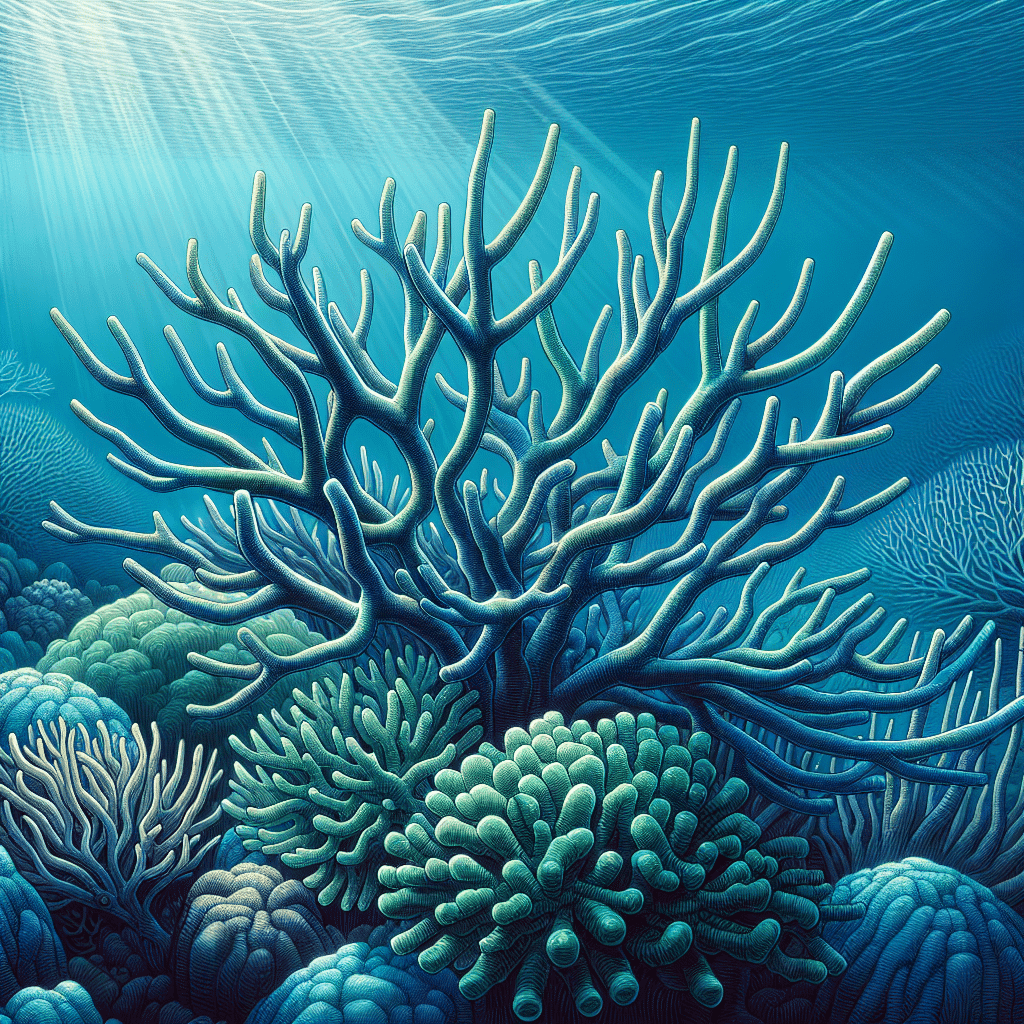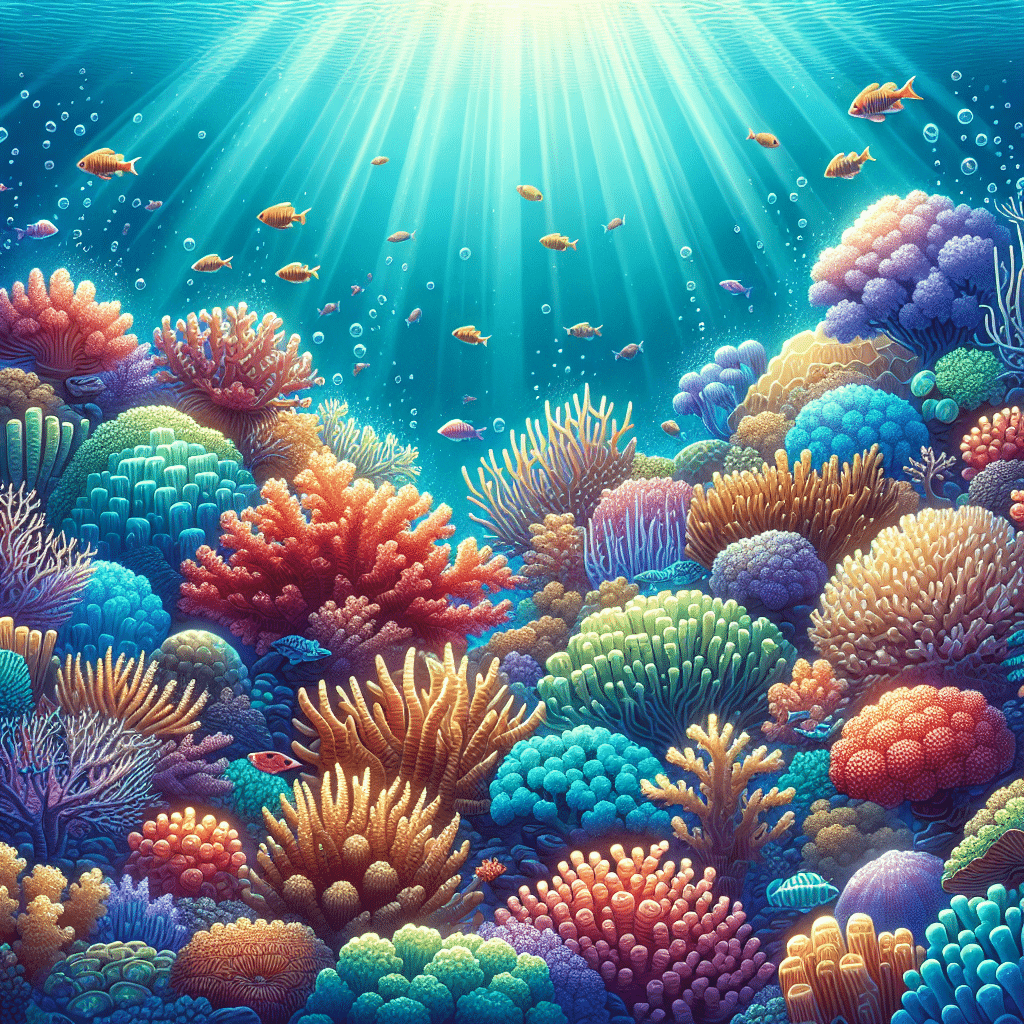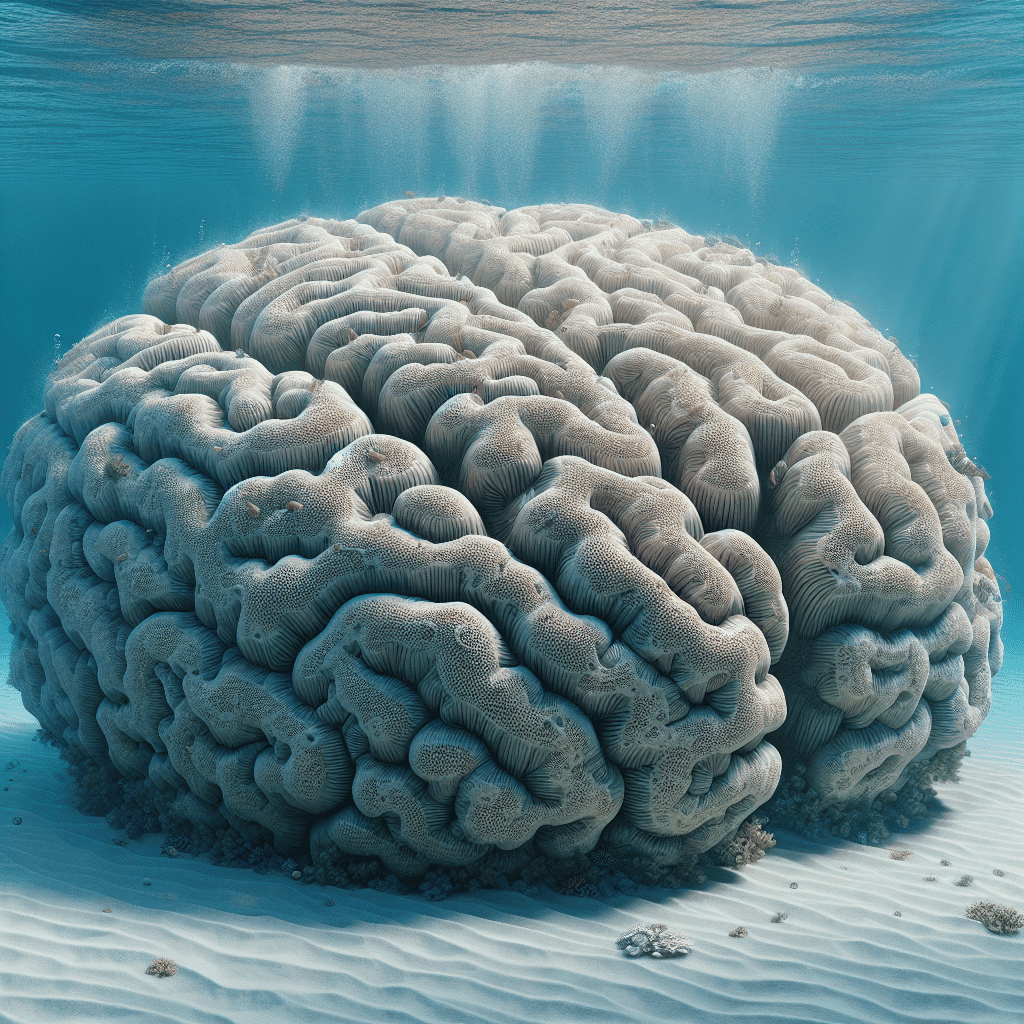Understanding Antler Coral
Importance of Antler Coral
Antler coral, particularly staghorn coral, plays a crucial role in the marine ecosystem. It has been instrumental in building Caribbean coral reefs over the last 5,000 years. These corals form dense groups called “thickets” in shallow waters, providing essential habitat for a variety of reef animals, especially fish. Unfortunately, this species has faced significant challenges due to disease events, leading to a drastic decline in population, with numbers dropping to less than 3 percent of their former abundance (NOAA Fisheries).
Staghorn coral is listed as Critically Endangered and is federally designated as a threatened species under the Endangered Species Act of 1973. The loss of these corals not only affects their populations but also disrupts the entire reef ecosystem, making their conservation vital.
Characteristics of Antler Coral
Antler coral colonies exhibit distinct features that make them easily recognizable. They typically have golden tan or pale brown coloration with white tips, and their branches resemble antlers, hence the name. These corals can grow quite large, with individual colonies reaching heights of at least 4 feet and diameters of up to 6 feet. The branches are generally 1–3 inches thick and interlock to form a strong framework that contributes to the structural integrity of the reef.
Here’s a quick overview of the characteristics of antler coral:
| Feature | Description |
|---|---|
| Color | Golden tan or pale brown with white tips |
| Structure | Antler-like branches |
| Growth Height | At least 4 feet |
| Growth Diameter | Up to 6 feet |
| Branch Thickness | Typically 1–3 inches thick |
Understanding the importance and characteristics of antler coral is crucial for reef tank hobbyists. Incorporating these corals into a reef tank can enhance the aesthetic appeal while also contributing to the overall health of the tank’s ecosystem. For more information on different types of corals, check out our articles on brain coral, mushroom coral, and acropora.
Habitat and Distribution
Natural Environment of Antler Coral
Antler coral thrives in clear, shallow waters that typically range from 15 to 60 feet deep. It is commonly found on coral reefs, where it plays a vital role in the ecosystem. This coral species prefers non-turbid environments, making it well-suited for various reef habitats including spur and groove, bank reef, patch reef, and transitional reef habitats. The ideal water temperature for antler coral ranges from 66 to 80 degrees Fahrenheit (19 – 27 degrees Celsius), with a salinity level between 33 to 37 ppt (parts per thousand).
Geographic Distribution
Antler coral is primarily distributed throughout the Western Atlantic Ocean. It can be found from the Florida Keys and the Bahamas, extending to various Caribbean islands. However, it is absent from U.S. waters in the Gulf of Mexico, Bermuda, and the west coast of South America. Notably, antler coral is often located within 20 meters (65 feet) of the water’s surface, which is essential for its growth and health.
| Location | Depth Range | Water Temperature (°F) | Salinity (ppt) |
|---|---|---|---|
| Coral Reefs | 15–60 feet | 66 – 80 | 33 – 37 |
Antler coral is crucial for building the Caribbean coral reefs, contributing to the formation of dense groups called “thickets.” These thickets provide essential habitat for numerous reef animals, especially fish, making antler coral an important species for reef tank enthusiasts. For more information on different types of corals, check out our articles on staghorn coral and brain coral.
Reproduction and Growth
Reproductive Behavior of Antler Coral
Antler coral, specifically the staghorn variety, has some fascinating reproductive traits. It is a simultaneous hermaphrodite, meaning each colony produces both eggs and sperm. This allows for greater chances of successful reproduction. Typically, this coral reproduces once a year after the full moon in late summer. During this time, it engages in a process called “broadcast spawning.” This involves releasing eggs and sperm into the water column, allowing for fertilization to occur in the open sea.
For those of us who love to keep corals in our tanks, understanding this reproductive cycle can help in planning for the best conditions to support new growth. It’s essential to maintain optimal water quality during this time to encourage healthy spawning and larval development.
Growth Rate of Antler Coral
When it comes to growth, antler coral is known for its impressive speed. Under optimal conditions, staghorn coral can grow up to 8 inches in branch length each year. This translates to about 5 cm (~2 inches) of new skeleton for every 1 cm of existing skeleton annually. This rapid growth makes antler coral one of the fastest-growing species in the reef ecosystem, which is vital for building and maintaining healthy marine habitats.
Here’s a quick summary of the growth rates:
| Growth Metric | Rate |
|---|---|
| Annual Growth | Up to 8 inches per year |
| Skeleton Addition | 5 cm (~2 in) per 1 cm |
| Reproductive Maturity | About 7 inches tall |
This fast growth not only enhances the coral’s resilience but also supports marine biodiversity, serving as a nursery for juvenile fish and a buffer against erosion and storm damage. For reef tank hobbyists, knowing how quickly your corals can grow allows for better planning of your tank’s layout and overall ecosystem health. If you’re interested in exploring other types of corals, you can check out species like brain coral or torch coral for variety in your aquatic environment.
Threats and Conservation
Threats to Antler Coral
Antler coral, particularly the staghorn variety, faces several significant threats. One of the primary issues is ocean warming, which leads to the expulsion of algae from the coral tissues. This phenomenon, known as coral bleaching, can result in death if the stress is prolonged. Additionally, disease events have historically caused substantial mortality in staghorn coral populations, reducing their numbers drastically since the early 1980s. It is estimated that populations have declined to less than 3 percent of their former abundance NOAA Fisheries.
Other threats include pollution, which can affect water quality, and physical damage from boating, fishing, and coastal development. These factors collectively contribute to the decline of antler coral and similar species, making conservation efforts critical for their survival.
| Threats to Antler Coral | Description |
|---|---|
| Ocean warming | Causes coral bleaching and eventual death |
| Disease events | Significant mortality reducing populations drastically |
| Pollution | Affects water quality and coral health |
| Physical damage | Resulting from human activities like boating and coastal development |
Conservation Efforts
Conservation efforts for antler coral, especially for staghorn coral, have ramped up significantly in recent years. They are listed as Critically Endangered under the International Union for Conservation of Nature and designated as a threatened species under the Endangered Species Act of 1973. In 2008, the US National Marine Fisheries Service (NMFS) designated critical habitats for both staghorn and elkhorn corals Wikipedia.
Efforts to enhance the population include coral outplanting restoration activities, where researchers focus on reducing uncertainties and increasing the success of these initiatives. This involves understanding coral predators and testing different coral genotypes for disease resistance. Additionally, studies on early life history are conducted to enhance coral recovery by introducing new genetic individuals into their habitats.
These collective efforts aim to restore the populations of antler coral, ensuring its survival for future generations. For more information on different coral species, feel free to explore corals and discover more about related types like brain coral and elkhorn coral.
Care and Maintenance
Taking care of antler coral in a reef tank is essential for maintaining its health and vibrancy. Here’s how I approach the placement and feeding of this beautiful species.
Placement in Reef Tank
When I set up my reef tank, I make sure to place my antler coral in an area that mimics its natural habitat. Antler coral thrives in clear, shallow water, typically found at depths of 15–60 feet on coral reefs. It prefers locations within 20 meters (65 ft) of the water’s surface in non-turbid environments, such as fore, back, and patch reefs in the Western Atlantic Ocean (NOAA Fisheries).
To ensure optimal growth and health, I keep the following in mind during placement:
| Placement Factor | Recommendation |
|---|---|
| Light | Moderate to high light |
| Water Flow | Moderate to strong flow |
| Temperature | 66 to 80°F (19 – 27°C) |
| Salinity | 33 to 37 ppt (parts per thousand) |
This setup provides the ideal conditions for the antler coral to flourish and contribute to the overall ecosystem of my tank.
Feeding and Nutrition
I find that feeding my antler coral properly is crucial for its growth and health. Antler coral is known for its fast growth, adding up to 5 cm (~2 in) of new skeleton for every 1 cm of existing skeleton each year (Wikipedia). This rapid growth highlights its importance in reef-building and as a habitat for juvenile fish.
To keep my coral nourished, I ensure it receives the following:
| Nutrient Source | Feeding Frequency |
|---|---|
| Phytoplankton | 2-3 times per week |
| Zooplankton | 1-2 times per week |
| Coral Foods (liquid) | Weekly or as needed |
By including these food sources, I help support the coral’s growth and maintain its vibrant colors. Regular feeding not only aids in the coral’s health but also enhances the biodiversity of my reef tank. For more specific coral care tips, check out articles on corals and other types like torch coral or brain coral.
Lighting and Water Quality
Lighting Requirements
When it comes to keeping antler coral healthy and thriving in my reef tank, lighting is one of the most important factors to consider. Antler coral, like many other corals, requires adequate light to support its growth and photosynthesis. Generally, I aim for a lighting schedule of about 10-12 hours a day, using a combination of LED lights and T5 fluorescent bulbs.
Here’s a quick overview of the lighting needs for antler coral:
| Lighting Type | Recommended Intensity (PAR) | Duration (Hours) |
|---|---|---|
| LED | 150-300 µmol/m²/s | 10-12 |
| T5 Fluorescent | 150-250 µmol/m²/s | 10-12 |
It’s essential to adjust the intensity based on the specific needs of my tank and the overall health of the coral. Keeping the light too intense can lead to bleaching, while insufficient light may cause slow growth or poor health.
Water Quality Parameters
Maintaining optimal water quality is crucial for the health of antler coral. I keep a close eye on several key parameters to ensure a stable environment. Here’s a breakdown of the ideal water quality parameters I aim for:
| Parameter | Ideal Range |
|---|---|
| Temperature | 66 – 80°F (19 – 27°C) |
| Salinity | 33 – 37 ppt |
| pH | 8.1 – 8.4 |
| Ammonia | 0 ppm |
| Nitrate | < 5 ppm |
| Phosphate | < 0.03 ppm |
Consistent monitoring helps me keep my coral vibrant and healthy. Regular water changes and using quality filtration systems also play a significant role in maintaining these parameters. For those new to reef tanks, it’s beneficial to invest in good water testing kits to ensure everything stays within the ideal ranges.
For more information on caring for corals, check out our articles on brain coral and mushroom coral.
Common Diseases
Diseases Affecting Antler Coral
Antler coral, like other corals, can be susceptible to a variety of diseases that may impact their health and vitality. Some common diseases affecting antler coral include:
Coral Bleaching: This occurs when corals expel the algae (zooxanthellae) living in their tissues, usually due to stress from rising water temperatures. When this happens, the coral loses its color and becomes more vulnerable to disease.
White Band Disease: This is a bacterial infection that causes tissue loss and can lead to the death of the coral. It typically starts at the tips of the coral branches and spreads downwards.
Black Band Disease: A more severe bacterial infection, black band disease can rapidly kill coral tissue, leading to significant mortality if not addressed quickly.
| Disease | Symptoms | Treatment |
|---|---|---|
| Coral Bleaching | Loss of color, tissue stress | Maintain stable water temperatures; improve water quality |
| White Band Disease | Tissue loss, visible white bands | Quarantine affected corals; use antibiotics under guidance |
| Black Band Disease | Rapid tissue death, black band appearance | Quarantine; manage water quality and flow |
Prevention and Treatment
Preventing diseases in antler coral involves maintaining optimal conditions in your reef tank. Here are some steps I take to ensure my corals remain healthy:
Maintain Water Quality: Regular testing and adjustments of water parameters such as pH, salinity, and temperature are essential. Keeping these levels stable can help prevent stress-related diseases.
Adequate Lighting: Ensure your corals receive the right amount of light. Both too much and too little light can stress corals and lead to bleaching or other health issues.
Regular Feeding: Providing appropriate nutrition can strengthen corals and enhance their resistance to diseases. I make sure to use quality coral food that includes essential nutrients.
Monitor Tank Inhabitants: Keeping an eye on fish or invertebrates that may harm corals is crucial. Some species can be detrimental to coral health.
If I notice any signs of disease, I act quickly. Quarantining affected corals is often necessary to prevent the spread of infection. For bacterial infections, I may consult with a specialist about antibiotic treatments, but I always prefer to address environmental factors first.
By regularly checking on my reef tank and being proactive about care, I can help ensure that my antler coral thrives and remains disease-free.
Interaction with Other Species
Symbiotic Relationships
I find that one of the most fascinating aspects of antler coral is its symbiotic relationships with various marine organisms. These corals often host tiny algae called zooxanthellae within their tissues. This relationship is mutually beneficial; the algae conduct photosynthesis, providing nutrients to the coral, while the coral offers the algae a protected environment and access to sunlight. This partnership enhances the growth and health of the coral, making it a vital component of the reef ecosystem.
In addition to zooxanthellae, antler coral also interacts with other organisms, including certain species of fish and invertebrates. These relationships can help to maintain the health of the coral by controlling algae growth and providing nutrients through waste products.
Inhabitants of Antler Coral
Antler coral provides a habitat for various marine species, contributing to the biodiversity of the reef. Numerous fish species, such as clownfish and damselfish, may seek shelter among the branches of antler coral. This not only offers protection from predators but also provides a hunting ground for smaller fish preying on the algae and microorganisms that grow on the coral.
The table below highlights some common inhabitants of antler coral:
| Inhabitant Type | Examples |
|---|---|
| Fish | Clownfish, Damselfish |
| Invertebrates | Sea Urchins, Shrimp |
| Other Coral Species | Montipora, Acropora |
Antler coral’s dense structure creates an interlocking framework that forms thickets, providing essential habitat for various reef animals (NOAA Fisheries). This biodiversity is critical for maintaining the overall health of reef ecosystems, making the care and preservation of antler coral crucial for reef tank hobbyists like me. For more information on other corals that share similar habitats, check out articles on brain coral, black coral, and mushroom coral.



